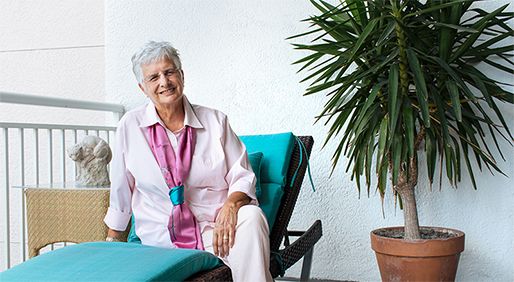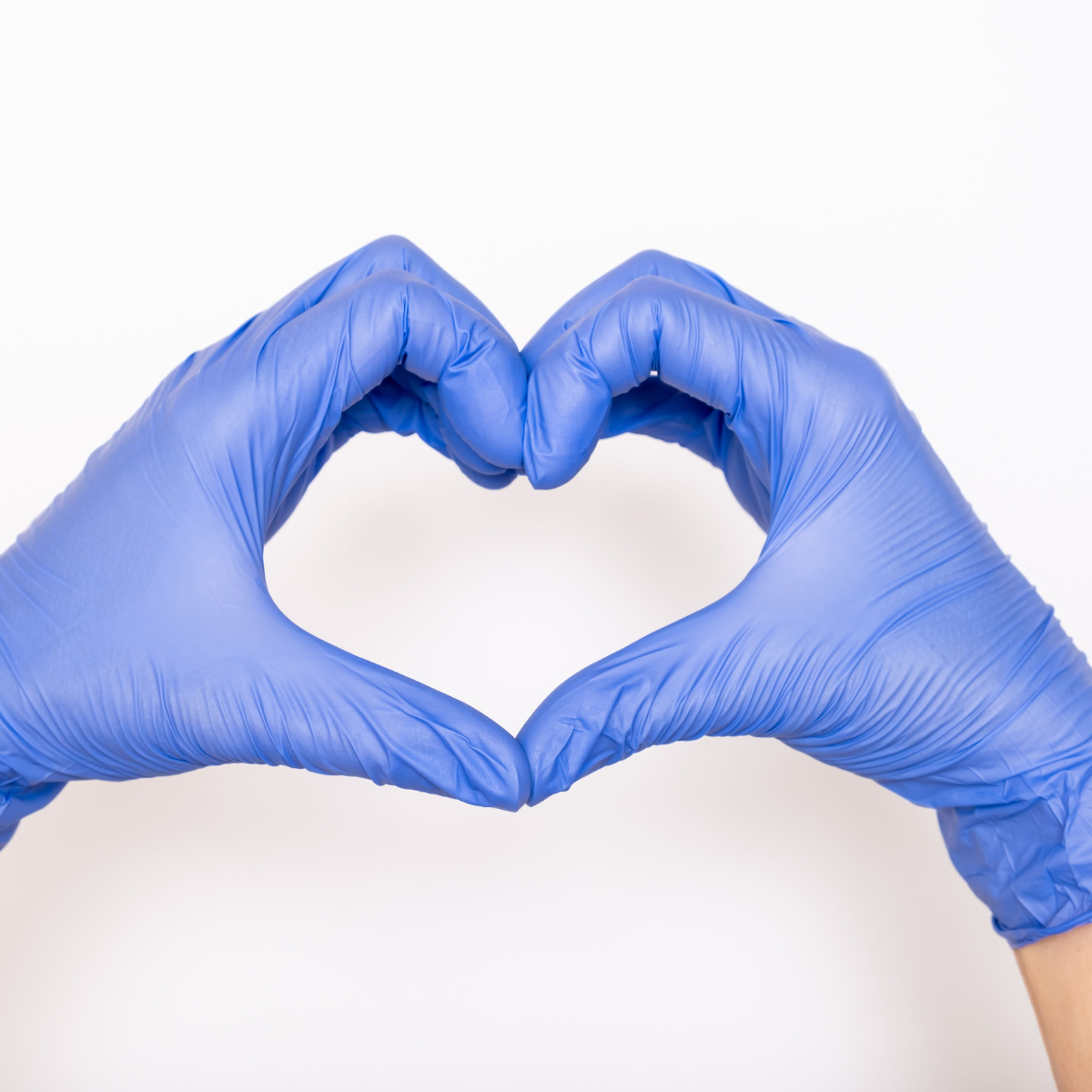Publication
Article
CURE
Sweet Charity: Nonprofits Help Pay for Cancer Drugs, Insurance
Author(s):
Many nonprofit organizations aid patients in paying for their cancer drugs or health insurance.
Diagnosed with cancer when she was already having financial difficulties, MARIANNE MORGAN was able to complete her medical treatments with help from the nonprofit HealthWell, which provides grants to eligible patients. - PHOTO BY STEPHANIE BOUGH

Diagnosed with cancer when she was already having financial difficulties, MARIANNE MORGAN was able to complete her medical treatments with help from the nonprofit HealthWell, which provides grants to eligible patients. - PHOTO BY STEPHANIE BOUGH
It was 2009, and Marianne Morgan was having a bad year. A manufacturing business she ran with her partner was failing, and the resulting lack of income caused them to lose their home. Being diagnosed with breast cancer was almost too much to bear.
“I went to pick up my medication, and it came to $480, which I didn’t have,” she remembers. “I went home and told my partner, ‘I can’t afford this; we don’t have the money.’ I felt like I’d reached the bottom of the barrel.”
Morgan is by no means alone. According to the American Cancer Society, the total direct cost of cancer treatment in the United States was $88.7 billion in 2011. Since then, costs have continued to rise.
New and promising drugs and treatments are rapidly being brought to market, but often come with astronomical costs. According to a study by the National Bureau of Economic Research, the average price of new drugs has been increasing by 10 percent annually since 1995, or about $8,500 a year.
Cancer care can be particularly expensive, with some of the newer targeted drugs or immunotherapies — often only part of a patient’s medication regimen — costing in the neighborhood of $100,000 for a year’s worth of treatment. The amount patients are reimbursed for these costs can vary, depending on their insurers and plans.
The prevalence of such health care woes has resulted in a new term: financial toxicity, defined as any financial harm that patients experience as a result of the cost of their treatment.
Luckily, there are many nonprofit organizations set up with the goal of helping patients pay for the variety of costs associated with therapy. A good place to start is NeedyMeds (NeedyMeds.com), a clearinghouse where patients and survivors can find out what kind of assistance is available to them. In addition, the Cancer Financial Assistance Coalition (cancerfac.org) allows patients to enter a zip code and/or a diagnosis to search for groups that may be able to provide financial or other types of aid.
The nonprofit HealthWell Foundation is one organization that might show up in such a search. “Our founders recognized the need to help patients in the early 2000s,” says Krista Zodet, HealthWell president. “So many people were calling and telling us they couldn’t afford their medication, even though they had insurance. We’ve gotten to know many of them quite well through our interactions, and it’s humbling to know that you’re helping not just individual patients, but their families, as well.”
FINANCIAL DYNAMICS
The reason this help is needed so much is not strictly that some patients are uninsured. In fact, thanks to the Affordable Care Act, the number of uninsured patients has dropped dramatically, which is certainly good news. Unfortunately, many U.S. companies are gradually raising health insurance deductibles and premiums, transferring more health care costs to employees. Those who buy their own health insurance face the same issues, with more affordable plans requiring patients to bear more of the cost of their care.
“The group I’m most concerned about — a group that often goes unnoticed — are underinsured patients, says Yousuf Zafar, M.D., a health services researcher at Duke Cancer Institute. “Although they have insurance, it’s insufficient to cover their health care costs. They don’t always qualify for assistance programs or free drug programs, because they have some income and insurance. But they’re paying at least 10 to 20 percent more of their take-home income on out-of-pocket costs, which is the very definition of underinsurance.”
Why, meanwhile, are drug prices accelerating at such a rapid rate? The reasons are manifold, Zafar says. “Manufacturers will tell you that the drugs they’re bringing to market are much more expensive to develop and test,” he says. “Biologic therapies, which now comprise at least half of the oncology market, and immunotherapies, which are growing in terms of market share, are helping to drive the increases.”
Another factor is demand, says Zafar. The price of many anticancer drugs and others has actually increased many, many times over after entering the market, because the manufacturers are pricing them to match demand. Those price hikes have made cancer one of the most expensive conditions to treat.
FILLING THE NEED
What many cancer patients don’t know is that there’s a wide range of organizations to help them navigate the complicated maze of insurance requirements, point them toward vital resources and even assist them with bills.
NeedyMeds can help patients find a variety of such resources. Started nearly 20 years ago by Rich Sagall, M.D., NeedyMeds has gone from a weekend project to an organization with 27 employees that fields more than 6,000 calls a month on its hotline.
“I’d had a few patients who knew something was wrong, but didn’t want to bankrupt the family, so they didn’t come in until it was too late,” says Sagall. “Then a friend who’s a medical social worker told me about patient assistance programs, which I had never heard of. I had just learned to design and build websites, so I thought I could help people by getting the word out about the programs.”
Today, NeedyMeds.com is an exhaustive guide to financial resources that might otherwise fly under a patient’s radar. Additionally, the organization offers a free pharmacy card accepted at more than 63,000 pharmacies, which Sagall notes can save the cardholder up to 80 percent on over-the-counter and prescription medications, as well as prescribed medical supplies.
CancerCare is an organization that helps meet the needs of patients with cancer, providing them access to professional oncology social workers, support groups, cancer-related publications and financial assistance for their treatment-related expenses. Levy explains that “we help patients by assisting them with co-payments for certain approved medications, as well as treatment-related costs such as transportation, home care and child care.”
As is typical with other aid organizations, CancerCare requires applicants to complete an assessment for financial aid or counseling by giving the information to an oncology social worker via its toll-free HopeLine (800-813-4673).
“You have to be a patient with cancer in active treatment, and you must fit our financial guidelines for financial assistance,” Levy explains. A prospective beneficiary’s oncologist or other member of his or her health care team must confirm the diagnosis and treatment on an application, which is sent to the patient immediately after the initial phone conversation.
“Some of the programs do have restrictions,” notes Levy, “because our funders have criteria. Usually, we help people with incomes between 250 to 400 percent of the federal poverty level guidelines.” Co-pay assistance is disease-specific, and the amount of funding depends on the current state of grants for that disease.
CancerCare’s funding comes from corporate and community entities such as the Susan G. Komen foundation and Avon, as well as the organization’s own fundraising efforts, according to Levy. Patients can consult CancerCare’s website (cancercare.org/financial) to see what funding is available in their areas or for their disease states. Information on co-pay assistance is also available at cancercarecopay.org or 866-55-COPAY.
Similarly, assistance programs at HealthWell are set up by disease category, and, like CancerCare, it receives grants to help patients with specific diseases. “The majority of our funding comes from manufacturers who want to assist patients they can’t otherwise help,” says Zodet.
Medicare and Medicaid patients aren’t eligible for direct financial aid from pharmaceutical companies, so organizations such as HealthWell facilitate financial assistance to patients, directing resources where they’re needed.
“We’re fully independent from our donors, so upon receipt, the donation is assigned to a specific, agreed-upon fund and then disbursed to patients,” Zodet explains. “HealthWell manages the product lists, definitions and all other aspects of the funds.”
The organization’s criteria are similar to those of other agencies: Applicants must meet HealthWell’s income threshold, which is 400 to 500 percent of the federal poverty level. They must also have insurance, and it must cover the product for which they’re seeking assistance. As at CancerCare, applications for services can be completed on the website or over the phone.
“When they call the hotline, they’re asked the same questions as they would be in our online process, and our agents manage the screening on our side. Applicants learn immediately if they have been approved for a grant,” says Zodet.
A SUCCESSFUL OUTCOME
Morgan learned of HealthWell from a pharmacist at her cancer center who gave her a list of financial aid organizations. Asking for help wasn’t easy. “I had always been someone who contributed to charity; I never thought I’d be someone who needed it,” says Morgan. “But at that point, there was nowhere else to go.”
With help from HealthWell, she was able to successfully complete her treatment and is now cancer-free. Morgan recently turned 76 years old, and notes that she was able to celebrate thanks to the aid she received. “It nearly brings tears to my eyes to know there are people and foundations out there who can come and lift you up,” she says.
While it’s good to know these agencies are there if needed, Zafar suggests that patients who think they may have trouble paying bills inform their physicians at the outset. He notes that hospitals and clinics employ financial counselors and social workers who can intervene on a patient’s behalf before money problems spiral out of control. In addition, the federal Hill-Burton Act requires many health care facilities to provide a certain amount of free or low-cost care each year.
However, Zafar points out that many patients are reluctant to approach their doctor about finances, either because of embarrassment or a fear that it could compromise their treatment. In addition, physicians have traditionally not been very involved in the financial end of their professions.
“We providers need to be involved in the process and engage with patients about costs,” he says. “When we discuss the goals of care with patients, we should understand that sometimes the cost of treatment might play a role in that discussion.”
As for what can be done about the increasing price of medications and treatment, Zafar believes the solution must be multifactorial, involving all stakeholders. The ability to negotiate drug prices must be on the table, which means involving the pharmaceutical industry. Insurance companies must be more creative in offering their customers novel solutions without increasing the cost-sharing burden. The development of biosimilar drugs, generic equivalents of expensive biological therapies, will hopefully lower their costs.
As Sagall says, “No one should ever have to make a choice between paying rent and buying food or getting their prescriptions filled.”






